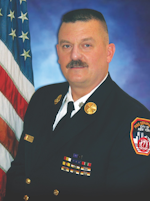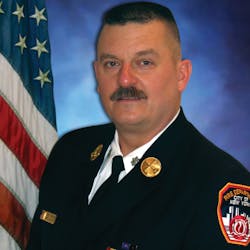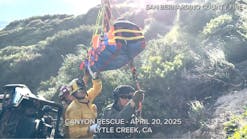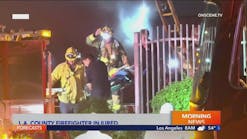Not much can be accomplished at a structure fire without water, and there are numerous tactics that can be performed to secure a dependable water supply. Along with these tactics are a handful of conditions and variables that can have an effect on establishing a water supply. Staffing, the distance between the hydrant and the fire building, the size of the supply line and the response time for the second engine are four of these variables.
Also important to remember: Tank water on your engine is carried to fight fire. It isn’t there for any particular situation or operation, but it certainly is there to be used as soon as possible when arriving at a fire.
Before arriving
One of the first ways for an engine to get water is to lay in a supply line from a hydrant that’s encountered before arriving at the fire. (Staffing might have an effect on this operation but shouldn’t eliminate it.) The engine stops at the hydrant, tests it and keys or wraps it before proceeding to the fire. The single firefighter doesn’t stay at the hydrant and complete the connection but, instead, boards the engine and rides to the fire, where an attack hoseline is pulled and fire attack is begun on tank water. A later-arriving engine completes the connection directly to the hydrant or connects the engine to the hydrant and attaches the supply line to a discharge and supplies the first engine.
Staying at the hydrant
Option two is a similar operation to option one, but the firefighter who tests the hydrant remains there while the engine quickly moves forward to the fire. The hydrant firefighter completes the connection and charges the hydrant when ordered or when a hose clamp is placed on the supply line by the engine chauffeur in front of the involved building.
This option works better when staffing includes four or more. However, engines that have staffing of three can get this done, and the officer can pull the line to the front door while the hydrant firefighter moves to the fire from the hydrant.
Second engine’s responsibility
A third option: The engine drives directly to the reported address, stretches an attack hoseline and goes to work immediately using booster water. That crew doesn’t lay in a line but does get very rapid water on the fire. The crew must be careful to monitor its water supply, withdrawing, if necessary, when the tank level gets low.
The second engine is required to select a hydrant, stop at it and lay in a line between the hydrant and the first engine in front of the involved building. Between means that the line can be laid from a hydrant to the engine or from the engine to a hydrant. Hydrant distances, street widths and apparatus positioning affect this decision.
In areas that lack hydrants, the first engine can respond directly to the reported address and a second engine or engine/tanker can supply the first engine with tank water. This same company then can set up a portable tank that the first engine can draft from, and a tanker shuttle can be established, where several tankers are filled remotely and empty their tanks into the portable tank in rotating fashion, which keeps the first engine supplied continuously.
LDH supply line
An option for areas that don’t have hydrants and have long driveways or entrance roadways is for the first engine to lay a supply line via a large-diameter hose (LDH) from the point of entry to the involved building. A later-arriving engine can connect to this supply line and establish either a tanker shuttle that uses the portable tank or extend the LDH supply line to a nearby dry hydrant, where an engine would be positioned to draft and pump to the first engine.
As you can see, engines can secure a dependable water supply in many ways. Familiarity with the different tactics and with the variables that pertain to your response area is important for a successful firefighting operation.

John J. Salka Jr. | Battalion Chief
JOHN J. SALKA JR., who is a Firehouse contributing editor, retired as a battalion chief with FDNY, serving as commander of the 18th battalion in the Bronx. Salka has instructed at several FDNY training programs, including the department’s Probationary Firefighters School, Captains Management Program and Battalion Chiefs Command Course. He conducts training programs at national and local conferences and has been recognized for his firefighter survival course, “Get Out Alive.” Salka co-authored the FDNY Engine Company Operations manual and wrote the book "First In, Last Out–Leadership Lessons From the New York Fire Department." He also operates Fire Command Training, which is a New York-based fire service training and consulting firm.






